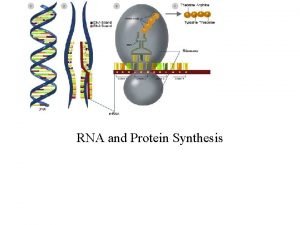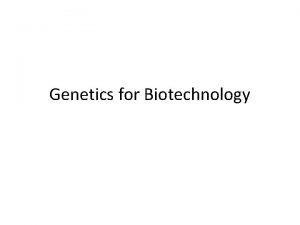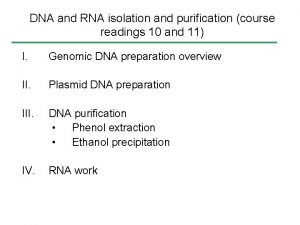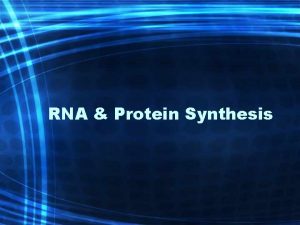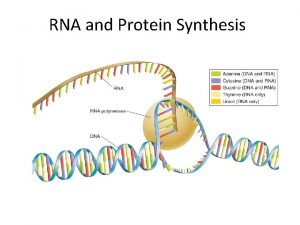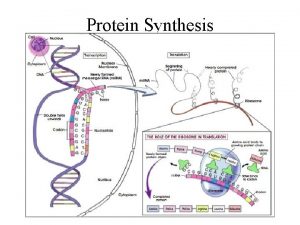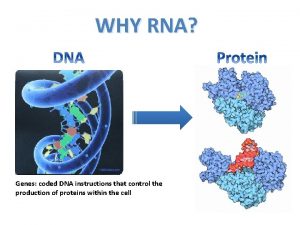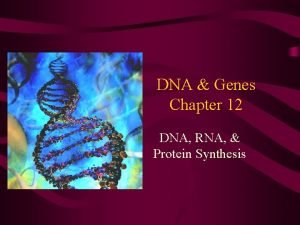PROTEIN SYNTHESIS RNA Genes are coded DNA instructions








- Slides: 8

PROTEIN SYNTHESIS

RNA • Genes are coded DNA instructions that control protein production • First, DNA must be copied to RNA • RNA structure: identical to DNA except: • Sugar = Ribose (not deoxyribose) • N base = C, G, A, and Uracil (U) (replaces thymine) • Single-stranded

Types of RNA • Main function RNA: to assemble amino acids into proteins • 3 Types: • Messenger RNA (m. RNA): carry copies of instructions to make proteins from DNA in nucleus → cytoplasm (ribosomes) • Ribosomal RNA (r. RNA): help make ribosomes • Transfer RNA (t. RNA): transfers amino acids to ribosomes for protein assembly

Transcription • Transcription: process by which portion of DNA is copied to complementary RNA sequence inside nucleus • Requires RNA polymerase (an enzyme) • Binds to DNA and separates strands • Uses DNA strand as template to make RNA complement in 5’-3’ direction

RNA Editing n At end of transcription “pre m. RNA” is formed n n Must be altered before going to ribosomes 1) Alteration of Ends n n Protects new RNA Serves as attachment point on ribosome Helps export m. RNA → ribosomes 2) RNA Splicing n Removal of sections of prem. RNA n n Introns: sections removed Exons: remaining sections to be translated

The Genetic Code • “Language” of m. RNA instructions • Read 3 letters at a time, called a codon, that specify a single amino acid • 64 total possible codons → 20 amino acids • Example: • UCGCAG = UCG + CAG • Serine + Glutamine… → Protein (polypeptide)

Translation • Translation: the decoding of an m. RNA sequence into amino acids on ribosomes • Begins at AUG (“start” codon) • Codons of m. RNA match up with Anticodons of complementary t. RNA • Translation continues until a “stop” codon is read (UAA, UAG, UGA) • Result is chain of new proteins!!

Protein Assembly • Amino acids connect with peptide bonds to form proteins (“polypeptides”) • Proper synthesis of proteins is essential to organism survival • Proteins are enzymes – control most chemical reactions • i. e. : photosynthesis, cellular respiration, etc. • “Life is the mode of action of proteins. ” • Engels’ definition of life, according to William Bragg, as given in Andrew Brown, J. D. Bernal: The Sage of Science (2005), 343. • Protein Synthesis


